Thank you! I have just started to look through the samples and they are all fascinatingly different. Very exciting indeed 🙂
Hundreds of species of plants coexist in the land that belongs to Botanical Dimensions. Some of them have been here for a very long time and evolved with the young island as it slowly grew a layer of vegetation on the rough volcanic rock, since it was formed around half a million years ago. Others came with the first settlers that arrived from Polynesia throughout the last 1900 years. Some species came with the Europeans since their arrival in the late 1700ds. Numerous species have arrived in the island accidentally or with people who wanted to grow certain familiar things, over the last century. Some of the imported species do very well, – sometimes extremely well – in this climate and end up outcompeting local varieties that would have filled the same niche space. Those have become invasive and ended up taking over large areas, changing the parameters for all living things in the forest, even changing the configuration of the land.
When Kathleen and Terrence began bringing in plants in the 1980:ies the idea was to create a living repository of culturally significant plants, that have been used by native peoples around the world for thousands of years. Kat and Terrence’s combined efforts were to ensure the safekeeping of the selected specimens so that they could be reintroduced to their, potentially impacted, natural habitat in the future. They were dreaming of Botanical Dimensions as a kind of time machine backup, in the event that large portions of the planet would be negatively affected by human activities over the years to come. Their property in Hawaii seemed to them a safer place than for example the Amazon rainforest, which was extensively being logged and burnt for pasture for the beef industry. Large parts of Asia have been exploited in order to accomodate for tourism and large parts of Africa and the Middle East have suffered very destructive armed conflicts which of course has a negative impact on biodiversity and conservation efforts. Sadly they were quite right in their visions for the future, and in many cases it is likely even worse than they could have imagined. Therefore this Garden of Eden is in my eyes an invaluable living library of plants that may be hard (and could become even harder) to find in other places.
The strive to collect samples for the STOMATA project at Botanical Dimensions is partially founded in my own (Linnea) curiosity surrounding species that have a substantial cultural value and a potentially positive effect on humans. I was interested in observing what is going on in an ecosystem that has been put together from plants which have been taken out of their original context. A fabricated ecosystem so to speak. What happens to them, how well do they coexist? Could we – humans – fullfil a role as aware stewards of our local ecosystems, and on a grander scale custodians of this planet? Could we turn things around and begin to create ecosystems filled with plants and animals that are thriving together, and that can give us all of the things we need in order to sustain our human communities? The native populations that have lived for millennia in their local environments have adapted completely and merged with their ecosystems. The knowledge and experience of interconnectedness with plants and animals that tribes in, for example, the Amazon or west Africa possess is knowledge that we need to obtain, cherish and pass on to future generations if we are going to stand a chance as a civilisation.
An other reason for nominating Botanical Dimensions as an appropriate place for collecting samples is that here we have access to cultivated and non-cultivated species that belong to the same genus. One example is Brunfelsia grandiflora that is used extensively amongst the Amazonian tribal communities for it’s medicinal properties. It belongs to the Nightshade family and is said to treat fevers, reumatism, syphilis and arthritis, as well as potentially kill a nasty parasite that can cause Leishmaniasis. The Brunfelsia grandiflora is native to the tropical regions of South America and foraged by the Amazonian indians. It is also cultivated and spread around the world, as an ornamental plant.
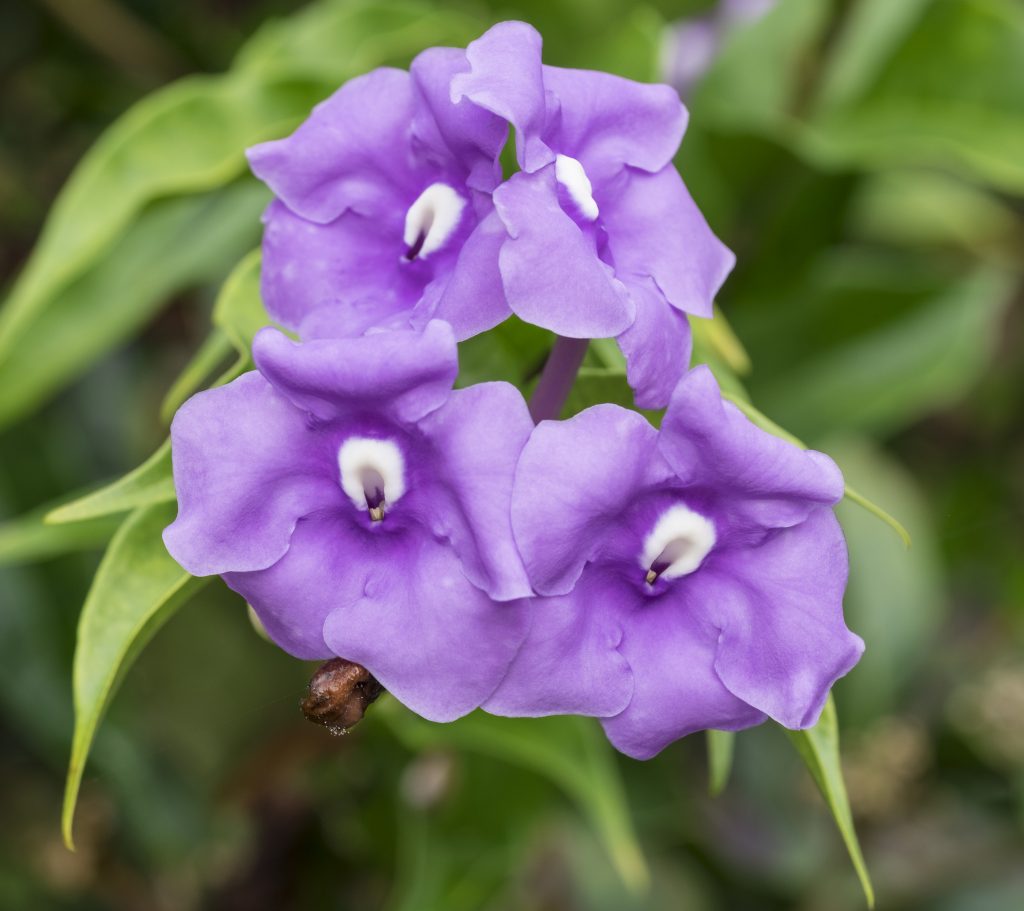
Its close relative however, Brunfelsia chiricaspi, is hardly cultivated. It is used by Amazonian shamans, as a potent psychoactive addition to brews that involve other medicinal plants. The effects don’t sound particularly alluring however; starting off with intense tingling sensation and numbness throughout the body, followed by a profound sense of chill and inability to move. Then intense nausea, shaking and foaming at the mouth. Side effects that can linger for days following ingestion include dizziness and exhaustion. The brew is clearly not administered for recreational purposes but rather used as a tool for the medicin man to “run diagnostics” of the patient’s system, in order to find an appropriate cure for the ailment.
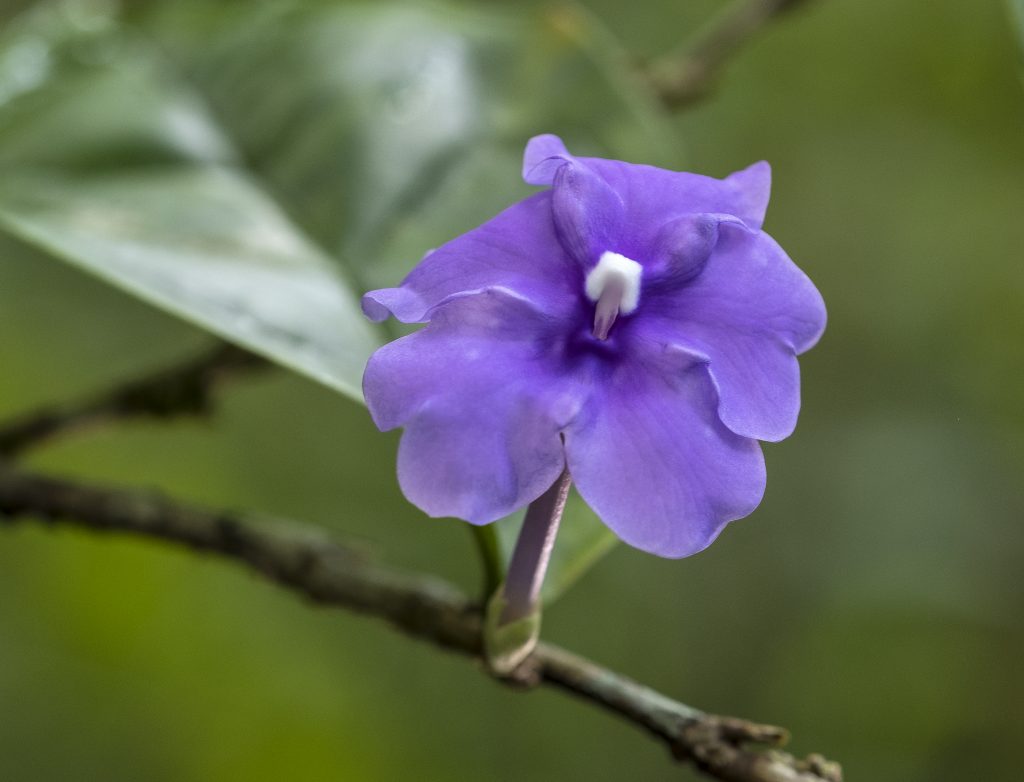
The Cordyline fruticosa, often called the red Ti plant, is a very significant plant amongst the indigenous animist religions of Austronesia. It is widely regarded as having mystical or spiritual powers, possessing the ability to “host spirits”.
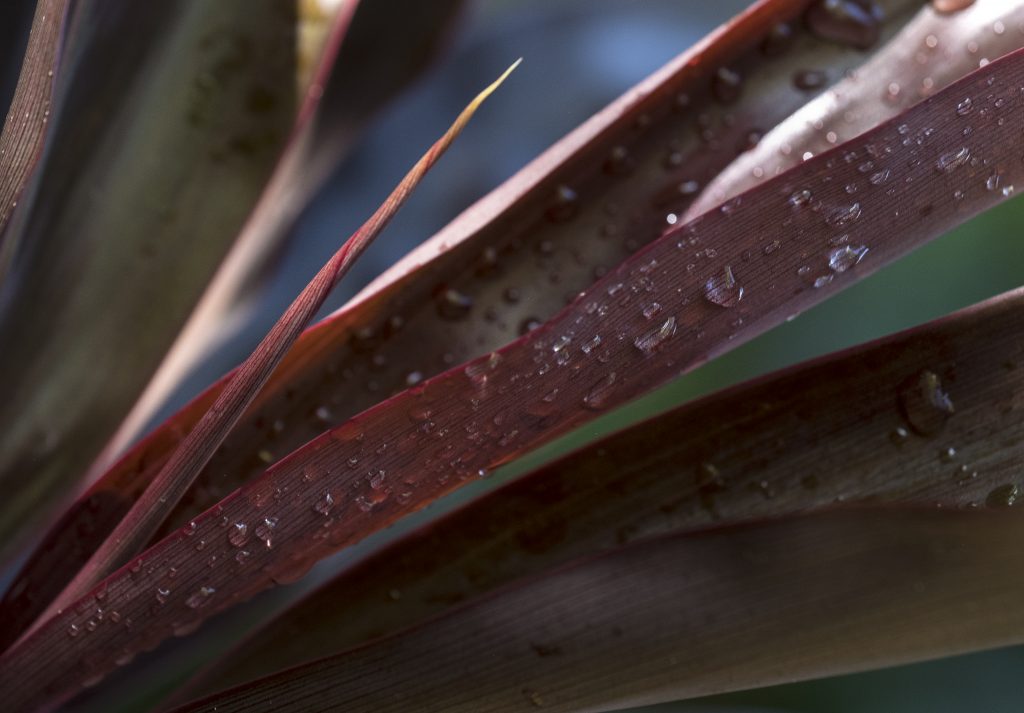
It is used for driving away malevolent spirits, for healing rituals and mediumship. Among Palaw’an cultures it is planted in burial grounds to prevent the dead from becoming malevolent spirits. In instances of an unknown death, shamans in Micronesia communicate with the dead spirit through the Ti plant, suggesting causes of death until the plant trembles.
In several cultures it is planted under newly built houses and around terraces and communities to ward of malign sorcery. It is also used to mark boundaries of cultivated fields.
In ancient Hawaii only the kahuna shaman was allowed to wear the leaf for certain rituals. The plants were sacred to the God of fertility and agriculture, as well as the Goddess of the forest and the hula dance.
The green variety is used for making the hula skirts that adorn Hawaiian dancers. In more recent times the rhizomes are used for making a honey-like sweetener. The roots can be harvested and fermented into an alcoholic beverage known as okolehao.
And then there is this funky flower, which is a very common ornamental plant, Anthurium andraeanum or Lace leaf.
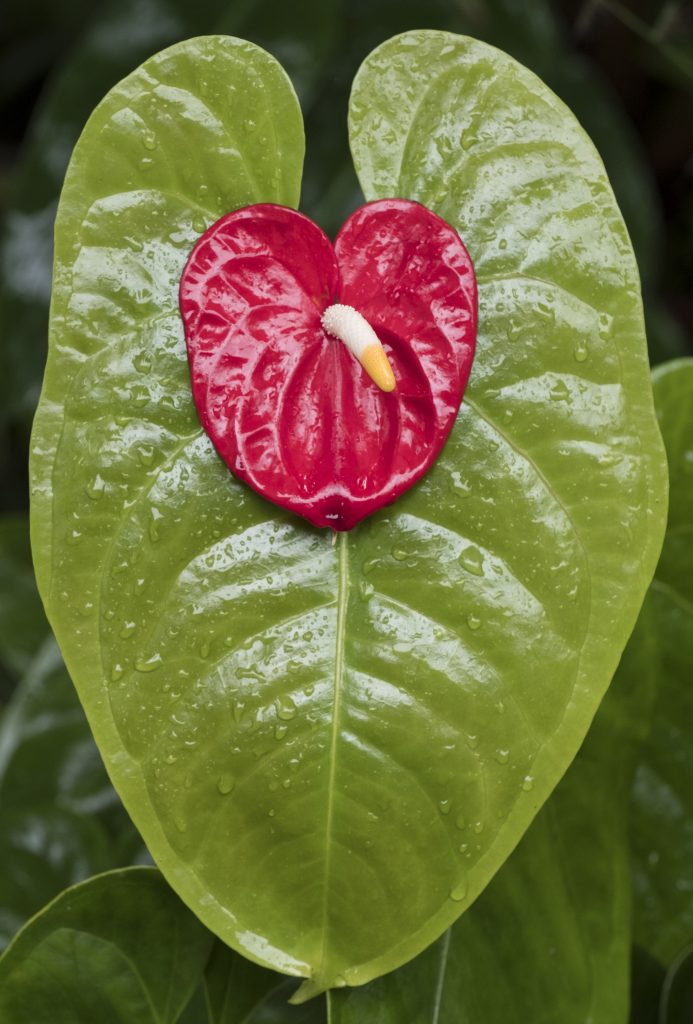
It is often encountered in the foajé of fancy hotels or as decoration in fine restaurants.
When propagated for the ornamental plant industry the plant is not given the opportunity to pollinate and thus will not go through its reproductive cycle. This inhibits the development of the gnarly looking seeds that would perhaps be too offensive for the eyes of luxury tourists.
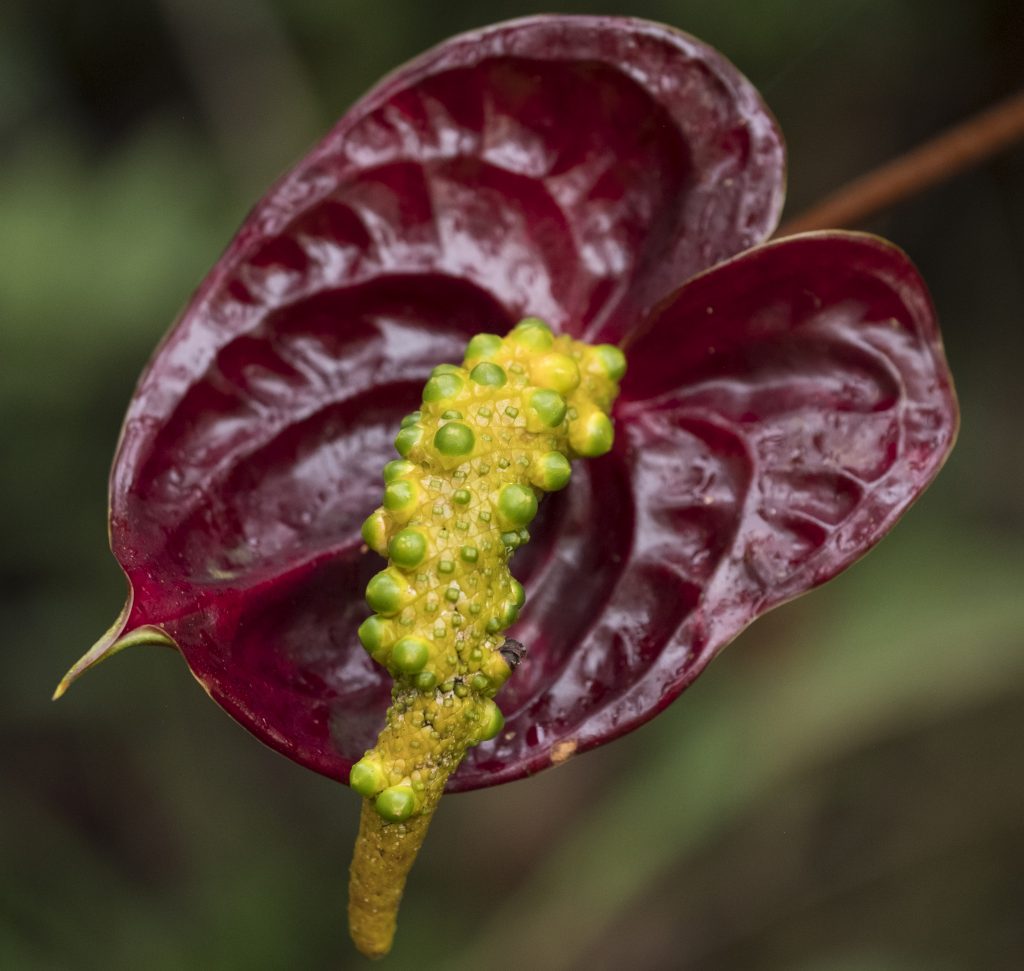

Nowadays the import of plants is closely monitored by strict border control initiatives. As with many island nations, the imported species have become great threats to the equilibrium of the native ecosystems. Efforts are made to reduce the impact of invasive species yet many people have grown accustomed to having access to familiar foods that may not be native at all. In my opinion it is important that we can locally source most of the things we need. Here we have a tricky equation. Growing food and medicinal plants that are not native to the environment = risk for local ecosystems yet not sourcing food and medicins locally = risk for entire planetary system.
Another complexity is the role of the custodian, if we are to tentatively assume that humans could and would take on such a responsibility. If an ecosystem is out of balance, is it the task of the custodian to direct development towards balance? To what degree is it then allowed or appropriate to use plants, fungi, insects and other animals in order to fill the niches of the ecosystem in question and/or to clean up a mess that is the result of destructive human activities?
One of our research questions revolves around the comparison between cultivated and non-cultivated plants, from the perspective of their capabilities to efficiently sequester carbon dioxide. We hope that this detailed view of the plants can help us understand this conundrum, and perhaps suggest courses of action for moving forward.
Love your work – am dying to see how the stomata of these various plants look like 🙂 I often wonder what the planet would look like without any human interference…
Cheers, Margret